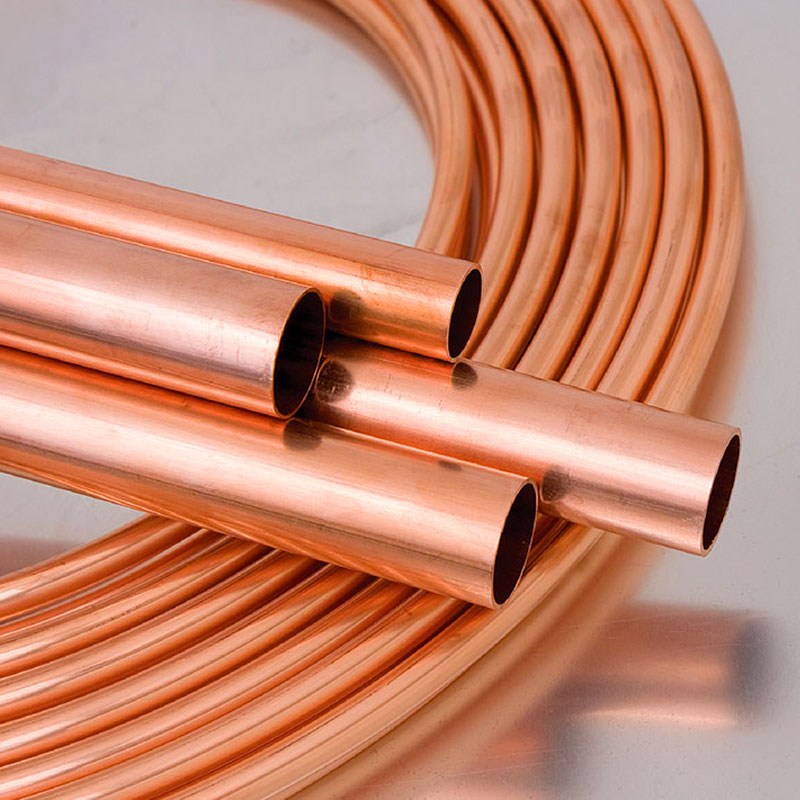
Copper tubing is a cornerstone in industries ranging from plumbing to refrigeration. Its unique properties, such as durability, thermal conductivity, and resistance to corrosion, make it an indispensable material for countless applications. This guide delves into everything you need to know about copper tubing, from its types and benefits to its wide-ranging uses.
What Is Copper Tubing?
Copper tubing is a hollow cylindrical structure made from copper. Its excellent thermal and electrical conductivity, coupled with its resistance to wear and environmental damage, make it a reliable choice for transporting fluids and gases. Available in rigid and flexible forms, copper tubing caters to both residential and industrial needs.
Types of Copper Tubing
Choosing the right type of copper tubing is crucial for the success of any project. Here are the most common types:
-
Type K
-
Features: Thickest walls, offering maximum durability.
-
Uses: Ideal for underground water lines and high-pressure systems.
-
-
Type L
-
Features: Medium wall thickness, balancing durability and flexibility.
-
Uses: Common in residential and commercial plumbing systems.
-
-
Type M
-
Features: Thinner walls, making it lightweight and affordable.
-
Uses: Suitable for low-pressure applications in residential plumbing.
-
-
ACR (Air Conditioning and Refrigeration) Tubing
-
Features: Pre-cleaned and dehydrated for HVAC and refrigeration use.
-
Uses: Primarily used for refrigerant lines.
-
-
Flexible Copper Tubing
-
Features: Highly malleable, allowing for easy bending and installation.
-
Uses: Often used in tight spaces, such as behind walls or in HVAC systems.
-
Advantages of Copper Tubing
Copper tubing outperforms many alternative materials due to its unique characteristics. Let’s explore its key benefits:
1. Durability and Longevity
Copper tubing can last for decades without significant degradation, even under harsh environmental conditions. Its corrosion resistance ensures long-term reliability.
2. Superior Thermal Conductivity
Copper’s excellent heat conductivity makes it the material of choice for HVAC and refrigeration systems, where efficient heat transfer is critical.
3. Hygiene and Safety
The natural antimicrobial properties of copper inhibit the growth of bacteria, making it a safer option for water systems and medical applications.
4. Eco-Friendly and Recyclable
Copper is 100% recyclable, reducing environmental impact and making it a sustainable material for modern applications.
5. Versatility
Whether used in plumbing, industrial processes, or even artistic installations, copper tubing offers unparalleled adaptability.
Applications of Copper Tubing
Copper tubing’s versatility enables its use in a variety of fields. Here are some of its most common applications:
1. Plumbing Systems
Copper tubing is a staple in plumbing due to its ability to resist corrosion and withstand high temperatures. It is used for both hot and cold water supply lines.
2. HVAC Systems
In heating, ventilation, and air conditioning systems, copper tubing facilitates efficient heat exchange and refrigerant transportation.
3. Refrigeration
Copper tubing is a key component in refrigeration systems, where its thermal conductivity ensures the effective functioning of cooling mechanisms.
4. Medical Gas Delivery
The hygiene benefits of copper make it an ideal material for delivering oxygen and other medical gases in hospitals and healthcare facilities.
5. Industrial Applications
From chemical processing to electrical wiring, copper tubing serves a variety of industrial purposes due to its strength and conductivity.
How to Select the Right Copper Tubing
Choosing the right copper tubing depends on factors such as the intended application, pressure requirements, and budget. Here are some tips:
-
Assess Wall Thickness: Opt for thicker walls for high-pressure environments.
-
Consider Flexibility: Flexible tubing is ideal for installations requiring bends and curves.
-
Match to Application: Use ACR tubing for HVAC or refrigeration, and Type L or M for plumbing.
-
Ensure Code Compliance: Verify that the tubing meets local regulations and industry standards.
Tips for Installing Copper Tubing
Proper installation ensures the optimal performance of copper tubing. Follow these best practices:
-
Use the Right Tools: Invest in high-quality cutters, benders, and flaring tools.
-
Prepare the Surface: Clean the tubing and fittings before joining to ensure a tight seal.
-
Choose the Right Joining Method: Soldering, brazing, or compression fittings should be selected based on the application.
-
Test for Leaks: Conduct pressure tests to identify and fix leaks before finalizing the installation.
Maintaining Copper Tubing
With regular maintenance, copper tubing can provide decades of reliable service. Here are some tips:
-
Inspect for Corrosion: Regularly check for signs of wear or damage, especially in exposed areas.
-
Avoid Abrasive Cleaners: Use gentle cleaning agents to preserve the tubing’s surface.
-
Monitor Connections: Ensure that joints and fittings remain secure over time.
-
Schedule Professional Checks: For complex systems like HVAC units, periodic inspections by experts are recommended.
Conclusion
Copper tubing remains a reliable, efficient, and sustainable material for a wide range of applications. Its durability, thermal conductivity, and antimicrobial properties make it a top choice for professionals and homeowners alike. By understanding the types, benefits, and applications of copper tubing, you can select the best option for your project and enjoy its lasting advantages.
Whether you’re upgrading your home’s plumbing system or installing a high-performance HVAC unit, copper tubing is a versatile and dependable solution. Embrace the benefits of copper and ensure the success of your next project.





Leave a Reply